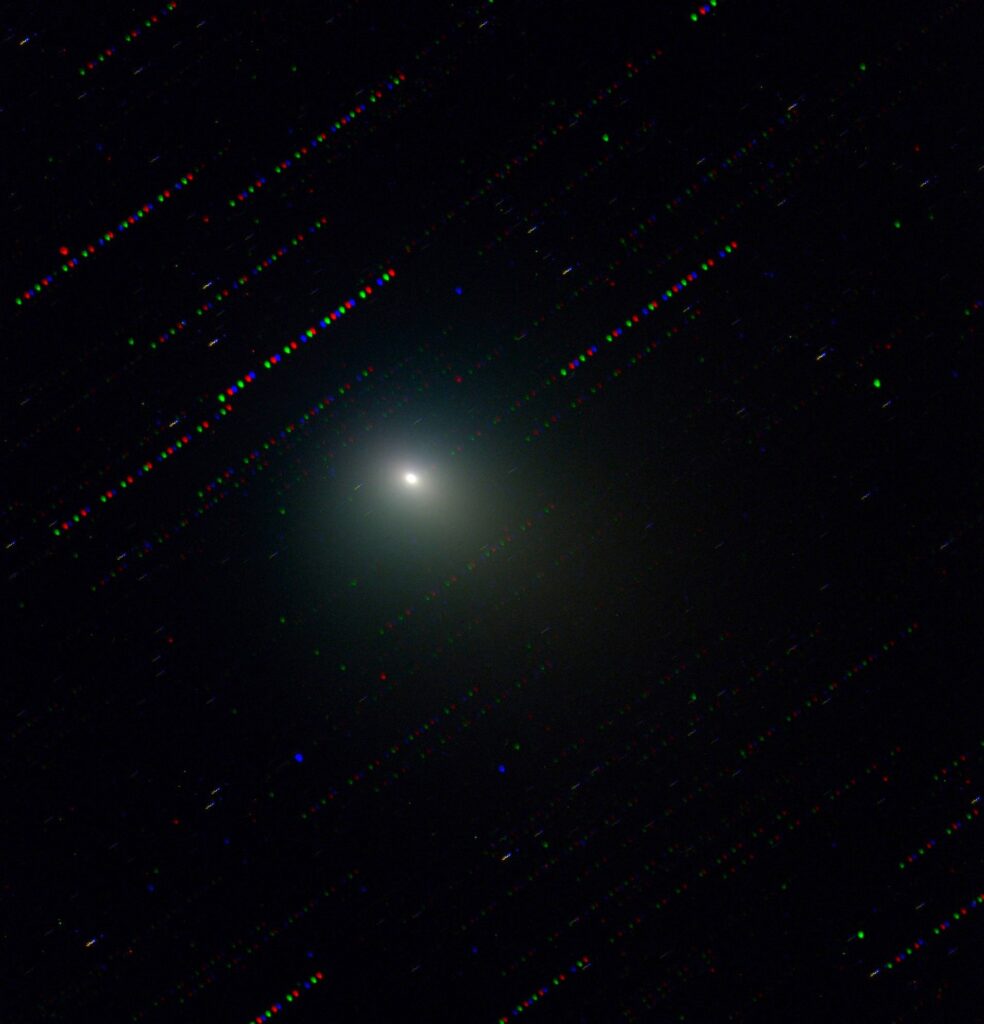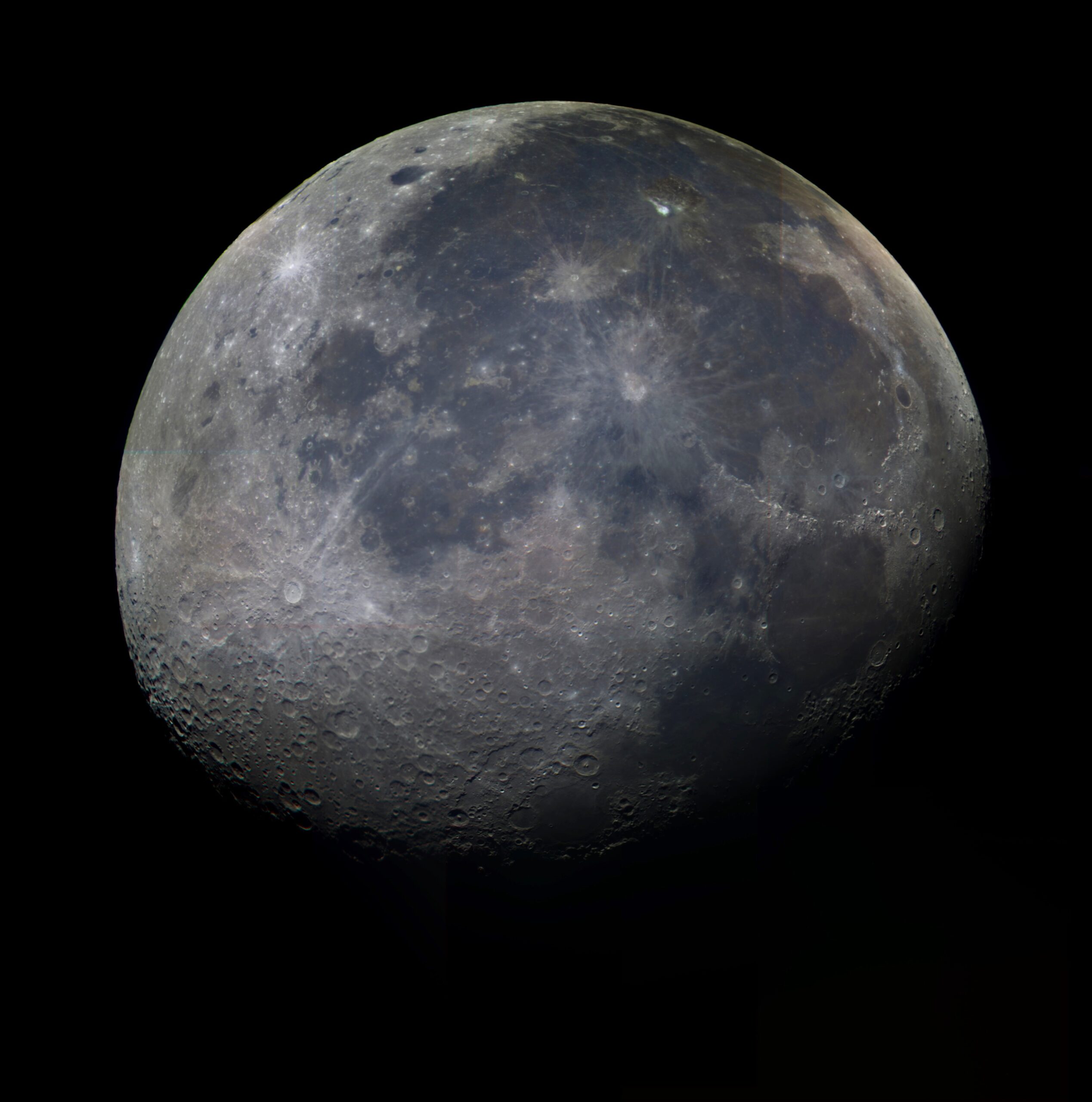Optical Observing of C/2023 E3 ZTF
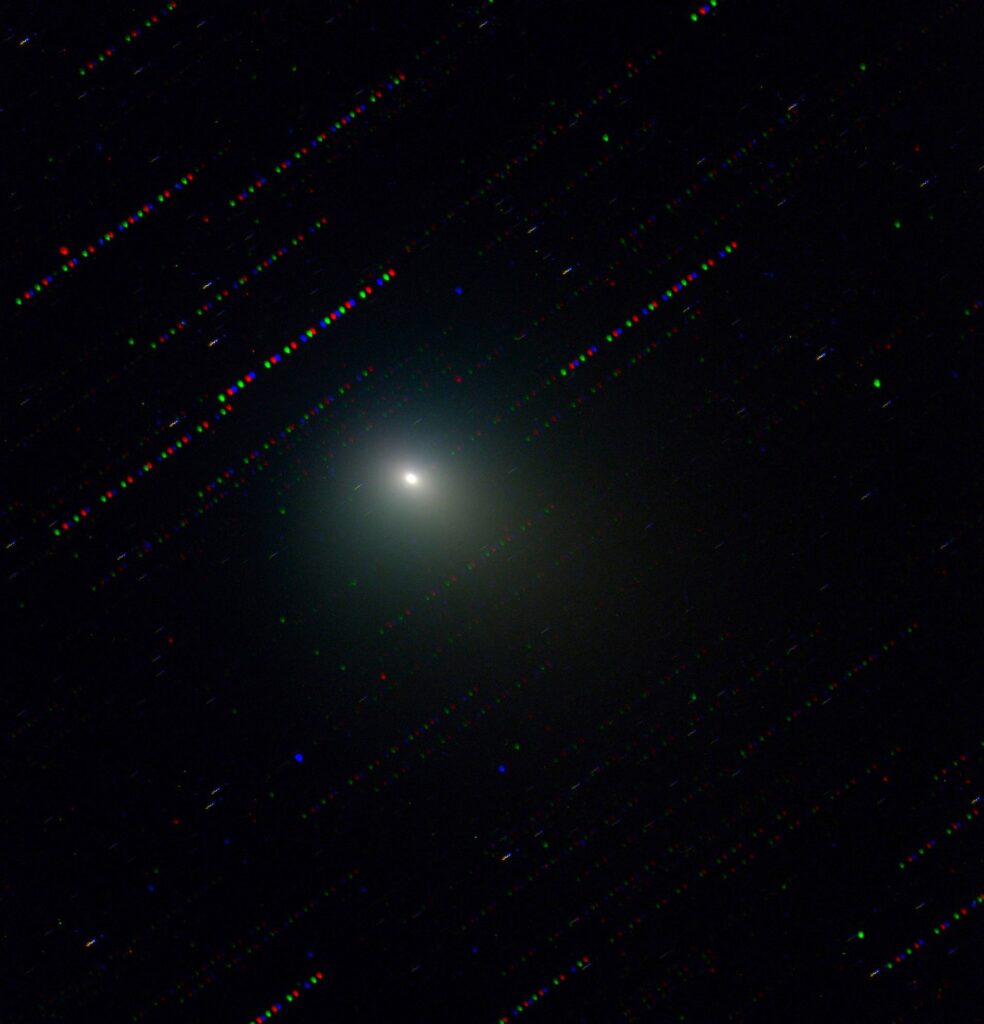
One of the most interesting, yet seemingly least discussed ideas in astronomy is just how dynamic the sky really is. Though there are millions and billions of stars hanging seemingly stagnant in the sky, there is so much happening constantly throughout every region of space. The recent passing of the comet C/2023 E3 ZTF (a mouthful, I know) highlights this beautifully. In the image on the right, the streaks of stars show how the comet is moving through the sky as it was being imaged. Though these streaks could be easily edited out (as I do in the final part of this post), I love the fact that their presence shows not only the direction of motion of the comet, but also gives a very rough estimate of its speed as well.
Processing
When I heard this comet, which only passes by Earth once in over 50,000 years, I couldn’t possibly pass up the chance to take a picture to keep and to share! To capture this image, I used the Mars Desert Research Station MRS-14 telescope to capture a total of 30 images: 10 exposures in R, 10 in V, and 10 in B (red green and blue respectively). I then used Afterglow to convert each of these images into their respective colors, as they come back in grayscale because of the way they absorb light instead of capture it like standard cameras. After this, I used Afterglow’s source catalogue and aligner tools to align each image so it would be centered on the comet, ignoring the background stars in the process. This is done to center each image on the comet to ensure quality on the subject of the image, as well as to compensate for the fact that the comet is so close to the Earth and moving past so quickly relative to us. After this was done, I stacked every image of each filter to get an accurate representation of the levels of color of the comet in each filter, resulting in the following three images:



After this, I grouped them all together which shows the image in all it’s colors.
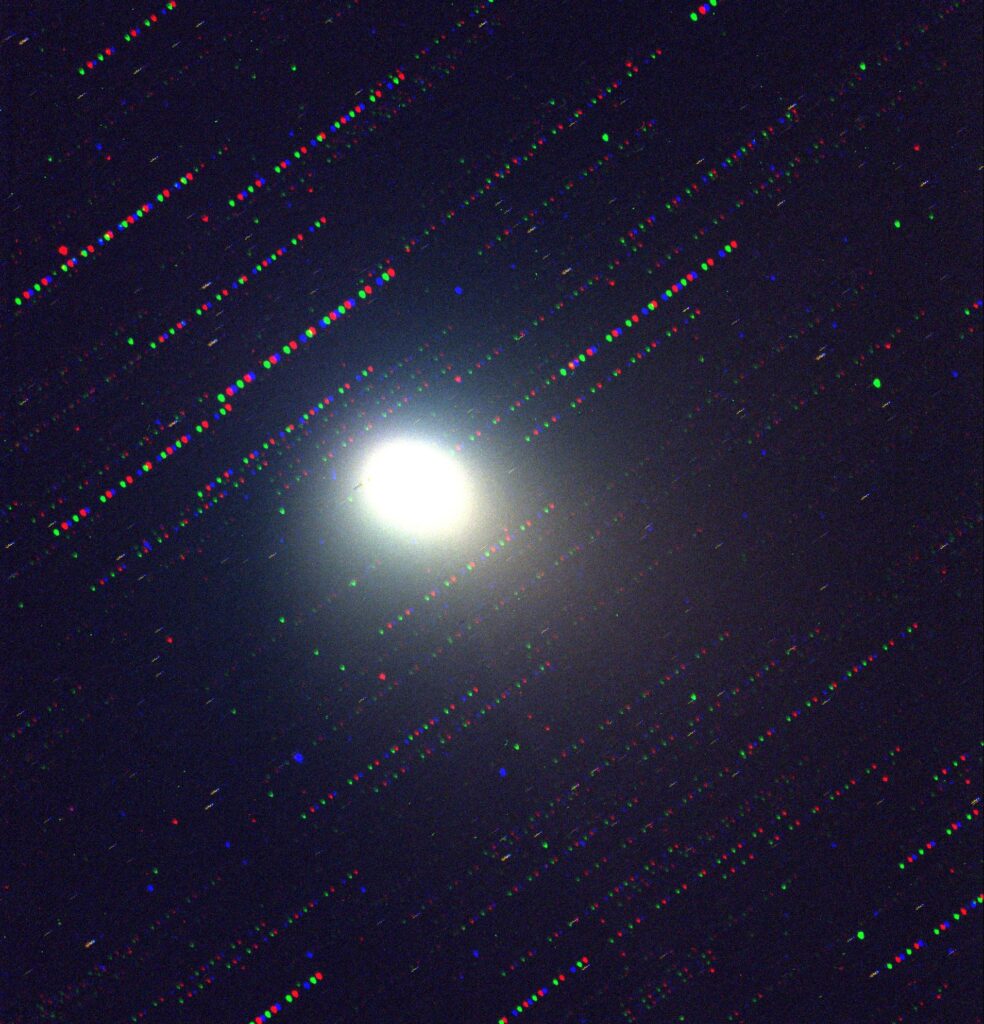
Looks pretty bad right? What’s shown now is just a ball of oversaturate light and isn’t actually the comet itself. After this, I can use Afterglow’s settings to adjust the background to remove some of the fuzziness, as well as make actual structure of the comet visible.
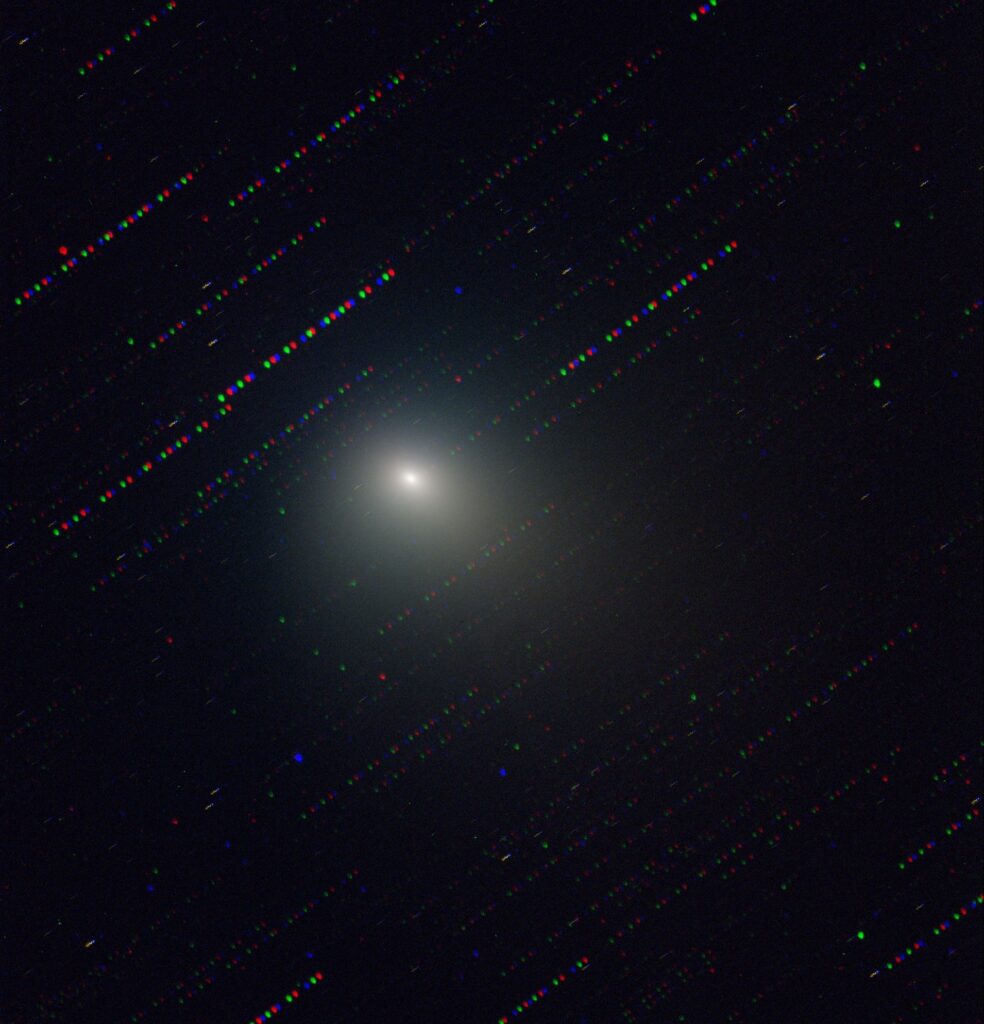
This is much better! The next thing to do is to get aceturate color on the comet, as well as bring out those colors as much as possible. Using Afterglow, I used a color-correction system to balance out the colors of the comet by measuring the brightness of the background stars and using those values to adjust the colors of the comet. After this, I dimmed the image even more to try and darken a few of the background star streaks. Just using some basic image editing settings on the downloaded result to enhance the colors, as well as to brighten the image as a whole. This gives us the final resulting image of this beautiful once-in-a-lifetime occurrence!
